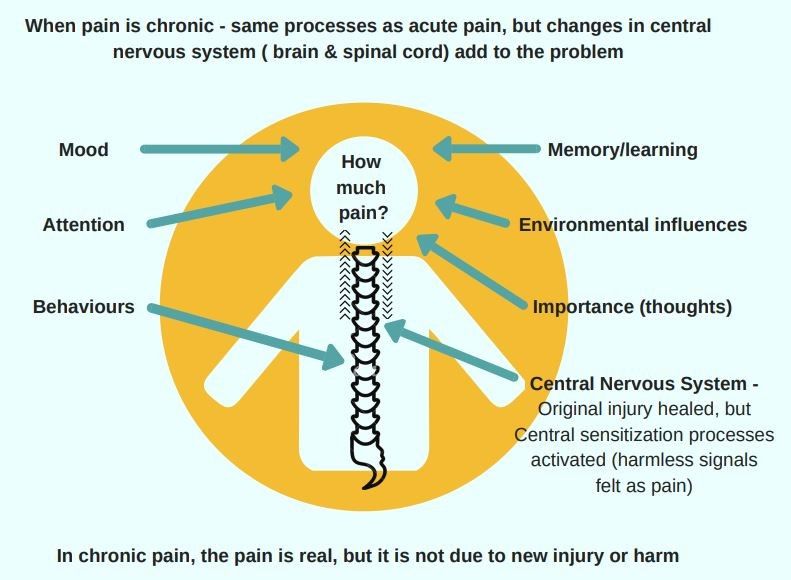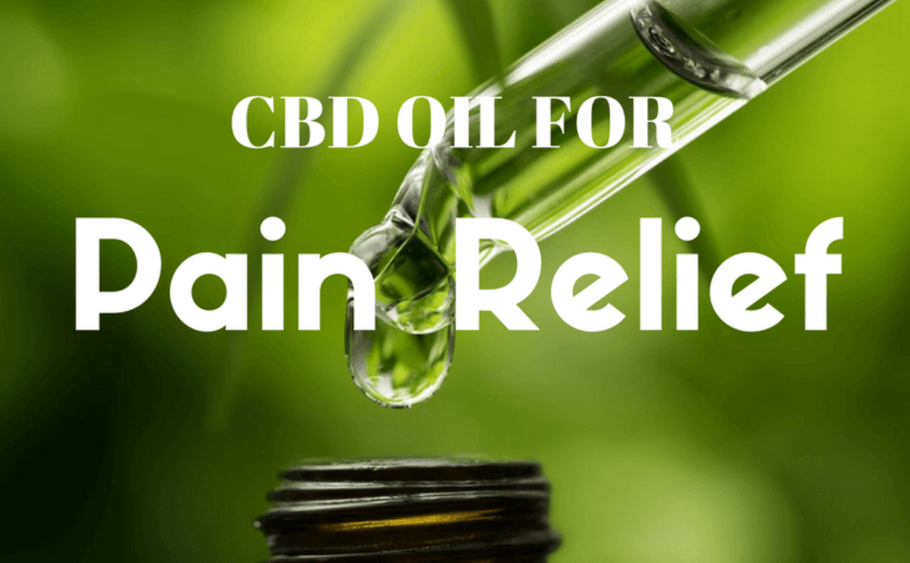Pain is a message sent by the body to the brain, signalling that disease, injury, or strenuous activity has caused trouble in some area of the body. Without pain, you would remain unaware of many problems – from torn ligaments to appendicitis – until the disorders become serious or life threatening.
At low levels, pain can motivate you to rest the inured area so that tissues can be repaired and additional damage can be prevented. When severe, pain can motivate you to seek treatment as well.
Not all pain appears to serve a useful function. While acute pain can alert us to a problem that needs immediate attention, in some cases pain lasts long after an injured area has healed. In other instances pain may be caused by recurring backaches, neck problems, hips, migraines, arthritis, and other disorders.
Referred to as chronic pain (which may be defined as pain that occurs continually or intermittently for more than six months). This pain may signal an ongoing problem that cannot be eliminated through treatment. In such a case, pain management often becomes the treatment goal.

Being aware of the chronic pain cycle as well as understanding its psychological effects can help you avoid being drawn into it.
1. The cycle usually begins with prolonged periods of rest and inactivity, causing a loss in physical strength, endurance, and flexibility. As a result, you may begin to lost confidence in your ability to do things, causing a lowering of personal goals.
2. Inability to perform usual activities at home or work is likely to promote feelings of frustration, and you may begin perceiving yourself as unproductive. This sense of lowered self-esteem may further lead to depression.
3. During times when the pain subsides or is more tolerable than usual, you may over exert yourself in an effort to prove to yourself and others that you can still do the things that you did before the chronic pain began.
4. As a result of the over exertion, the pain often returns and my be more severe than before. You may find yourself unable to finish tasks or accomplish goals, Discouraged and in pain, you begin limiting your activities, and the cycle begins again.
To keep from getting caught up in the chronic pain cycle is through pain management. Often, the reduction of physical pain can prevent the cycle from repeating itself.
Simple muscle strain is another leading cause of chronic pain. Although symptoms may come on suddenly and can be acutely painful, this is actually a problem that develops over a long period of time. When muscles contract, lactic acids are produced as by-products of muscular activity. It is the presence of lactic acid in the muscles that produces the familiar sensation of muscle fatigue following strenuous activity. If high levels of these acidic by-products accumulate in the muscles, they cause irritation that can eventually turn into pain and interfere with the normal conduction of electrical impulses in the muscle tissue. This results in a phenomenon called delayed-onset muscle soreness (DOMS).
Developing an effective treatment plan for chronic pain takes into consideration the severity of the pain and its root cause. Most often, treatment includes a combination of a variety of approaches. Hot and cold packs can be used to provide relief from pain and reduce swelling and inflammation. While bed rest used to be a common approach to managing pain, it is now believed that reducing physical activity could make the pain worse. Instead, stretching and strengthening exercises are often a part of the treatment for chronic pain, in the form of supervised physical therapy.
Medication is also used to manage chronic pain. The most commonly used medications include anti-inflammatory medications, and in some cases, opioids. Use of medication to chronic pain isn’t without risk. Long-term use of anti-inflammatory medications is associated with the development of ulcers, heartburn and fluid retention. The use of opioids for pain management is concerning because they are habit-forming drugs. Lastly, surgery is used as a last resort for managing chronic pain.
Recently, researchers have investigated how using CBD Oil for chronic pain could become an alternative method of treatment…
How CBD Oil works for Chronic Pain Relief
Because of the concerns associated with long-term use of over-the-counter and prescribed medication, along with the low success rates of surgery, interest in alternative pain management options is increasing. CBD oil has been proven to have anti-inflammatory properties and shows promise as a therapeutic alternative method for managing chronic pain.
In 2012, a study published by the Journal of Experimental Medicine found that CBD oil was effective in the suppression of both inflammatory and neuropathic chronic pain in mice. Their findings suggest that CBD oil could be a safe and effective method for managing hard-to-treat chronic pain. A small study on human subjects in 2017 was published in the Journal of Pain Research that observed improvement in chronic pain over the course of 12 months. In this study, the dosage was THC and CBD combined.

The marijuana plant contains a number of different compounds, each with different effects on the body and brain. The compounds associated with the “high” experienced from the drug are in the tetrahydrocannabinol (THC) family, but it’s another compound, cannabidiol (CBD) that has been most prominently linked with therapeutic effects for pain and inflammation.
CBD is not psychoactive, so when it’s isolated from the other compounds, you don’t get the psychological effects of intoxication associated with marijuana use. This makes it much less controversial. Today, marijuana strains are being cultivated that contain virtually no THC, but extracts of just CBD, usually in the form of oil, are available and legal.
This compound stimulates a part of the brain called the cannabinoid system. This stimulation helps reduce the intensity of pain and aids in the reduction of inflammation in the body. It also provides an alternate path for chronic pain management.
With CBD oil, researchers have found reduced central nervous effects, effective pain relief and anti-inflammatory actions. As CBD and other cannabis compounds are researched, and as applications for chronic pain management are further tested, a consensus about healthy use and advantages is emerging. Evidence is mounting in favour of CBD as a beneficial end effective treatment in relieving chronic pain.
In most cases, chronic pain also has an important psychological component, usually a deep-seated emotional or stress-related problem. Other contributors can include poor posture, improper footwear and waling habits, improper lifting, straining, calcium deficiency, slouching when sitting, and sleeping on a mattress that is too soft. Kidney, bladder, and prostate problems, female pelvic disorders, and even constipation may produce back pain. Chronic conditions that can cause back pain include arthritis, rheumatism, bone disease, and abnormal curvature of the spine. Fractures are rarely the cause of chronic pain. The two biggest factors are likely being overweight and living a sedentary lifestyle.
Because the great majority of chronic pain cannot be explained, it is always advisable to take pain problems seriously and have them checked out.
At iCannabis we are focused on bringing the purest and most bio available medical cannabis to patients and their families.
We are a group that specialises in educating and helping Australian patients gain access to Cannabis for Medical purposes through education and real-life experiences with the healing powers of this plant.

